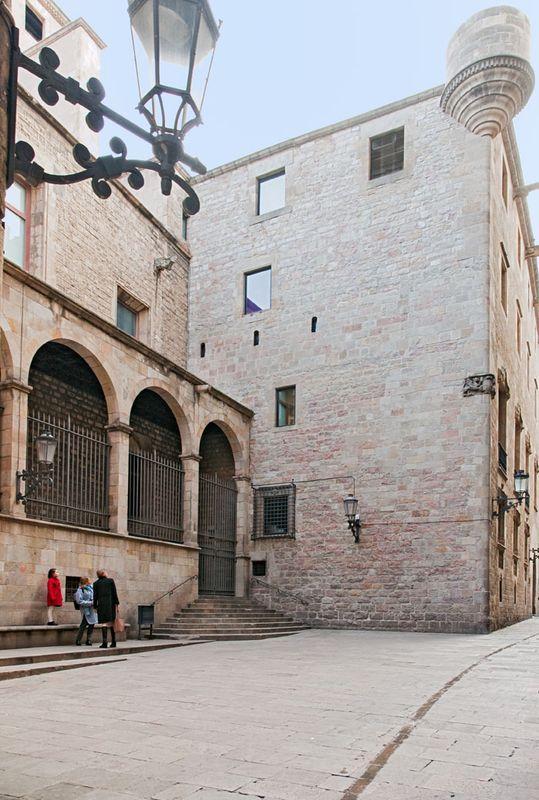The medieval Jewish cemetery was located 20 minutes away from the Jewish quarter, and to this day, this mount is known as Montjuïc, “mount of the Jews”. The first reference to it dates from 1091. After 1391, when there were no Jews officially living in the city, the cemetery was abandoned and the King gave permission for its tombstones to be sold and reused for new constructions in the city. In the 1940s, remains of the cemetery were uncovered. Human remains recovered were put into storage by the local authorities, where they are still currently held. Development of the area went underway and to this day only an empty plot of land remains untouched and is the sole reminder of the Jewish connection to the space.
10. Placa Sant Iu in front of the tombstones
Stories
Montjuic, the Jewish Cemetery.
Tombstones, a cruel reminder
Look up. Can you see any Hebrew letters engraved in stone? As a result of the end of the community, headstones from the Jewish cemetery of Montjuic were used in new constructions at the time. Many were placed so the Hebrew letters were hidden, however, others remained visible. The tombstones at Plaça Sant Iu are the most visible in a public space and are easily recognizable. The stones were used to build the Palau del Lloctinent in 1549, a governmental building and one of the most regal palaces at the time. It later housed the archive of the Crown of Aragon, and is now the headquarters of the foundation of the archives. The old Jewish tombstones thus adorn some of the Gothic landmarks of the city. Those stones closer to the street level show clear signs of deterioration, making it hard to read the letters, but are still a clear sign of the complex history of the city.
Powered by Clio Muse Tours
